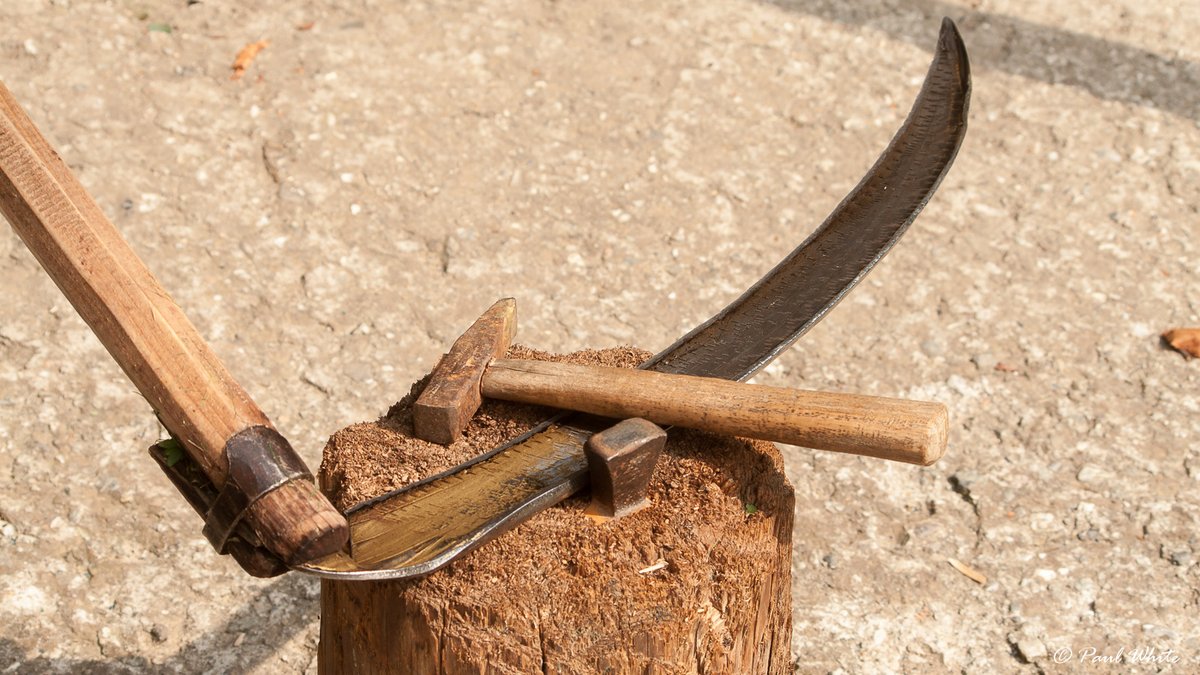
1. Scything grass by hand is an art, but unfortunately this is slowly being replaced by mechanisation. This farmer sharpened his blade regularly and kept his stone in a holster on his belt for easy access. #sustainability #grass #farming #Transylvania #scythe #hay 

3. The farmer was just finishing off here. He had a very efficient, fluid motion with a wide reaching arc. He was such a pleasure to watch. #scythe #scything #farmer #farming #makinghay #grass #Transylvania 

Sharpening scythe blade on the job. Making hay in #Transylvania 

5. Terraced hay growing in Transylvania. There's a lot of cows in this cluster of villages so a lot of hay is required for winter feed. The cows will go into large wooden barns and won't come out again until spring. It is not uncommon for temps to drop below -20oC during winter. 

6. So today I met someone who knows the guy that was scything at the start of this thread. Apparently his name is Arpad. He also said that Austrian blades are preferred locally for scything. He had a new blade on his shelf and this was the supplier on the packaging. 

7. The price was 165 RON which todays exchange rate is £28.64 or $39.37 or 33.48 EUR. He said the Austrian blades can be found in most local hardware stores. 

10. Scythe maintenance in Transylvania. The guy working this blade was called Laszlo. He told me that he started scything at age 10 and could work proficiently by age 14. He said he prefers handles made of pine when scything for many hours due to the light weight. #peening 

• • •
Missing some Tweet in this thread? You can try to
force a refresh







